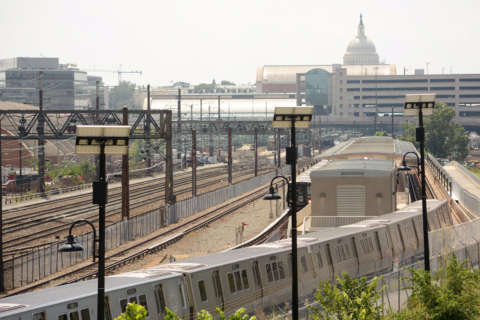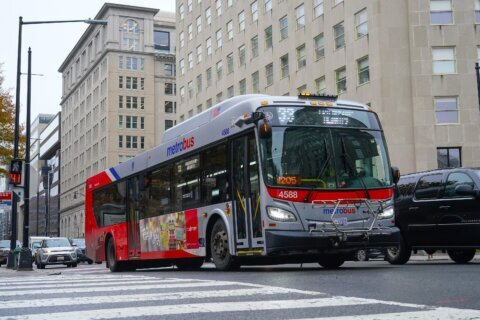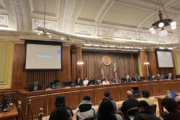WASHINGTON — Metro fell significantly behind on critical bridge inspections over the past year because key tools were allowed to slip out of certification, a new report says.
According to an internal Metro Quality Assurance, Internal Compliance & Oversight office report that was posted quietly last month, eight bridge inspections were critically behind schedule because all three of Metro’s lifts were out of service as of the end of March due to lapsed certifications.
Such lifts can reach around and under a bridge, allowing inspectors to get up close.
“Essential bridge inspection equipment has been unavailable for over a year due to inadequate certification,” the report said, concluding that the operational risk of a problem is high.
The units — referred to as “down and unders” for the way they carry inspectors — were last inspected and certified in 2015. In April, Metro said that it was making progress on a new inspection contract.
A Blue Line bridge near Van Dorn Street was furthest behind schedule as of early spring. It should have been checked in March 2016 but had not been done as of April 2017.
Other inspections have been slowed by a weak partnership with CSX that can make it time consuming to get clearance to inspect bridges that cross over the freight tracks.
Last year, concrete crumbled at the Rhode Island Avenue station, an area that remains at the top of Metro’s structural repair priorities list, ahead of an area near Cheverly and a vent shaft near Farragut North.
Crumbling platforms
At least 15 station platform edges are falling apart, but the Metro department responsible for the platforms sees the problem as less serious than some other experts do, and it has only listed seven spots in need of repair.
At Van Dorn Street, crumbling concrete even exposed supporting rebar, and only an outside expert said temporary support for the platform edge was needed.
“Structural findings that do not pose an imminent danger to passengers or others are not being addressed efficiently,” the report found.
At King Street and Reagan National Airport, the platform issues date back to at least 2010, but there has been no permanent solution.
“Recently Structural Engineering missed an opportunity to utilize the extended closure of King Street Metro Station provided by SafeTrack to push for a more permanent solution of the platform edge deterioration,” the report said.
Where does the data go?
Metro spent $1.8 million in 2016 on structural inspection salaries alone, but much of the data collected on the structural infrastructure went unused.
“After all of this data was collected there is no written procedure to utilize it in the most effective way,” according to the review, which concluded that this means “only a small portion” of 2016 inspection reports “are being fully reviewed.”
It recommends better use of Metro’s system to track problems. And
Metro inspection reports, when done correctly, include a significant amount of information, but much of it goes unused.
Reporting problems
Some structural problems found one year disappear from the following year’s report without evidence to show that repairs were made, while others can be rated in better condition than the previous year, even without evidence of repairs.
Metro inspection reports often use old or undated photos — an issue previously identified by the agency’s inspector general — or are missing photos entirely, which can make it difficult to verify current conditions.
Metro’s current system used to track structural inspections also automatically copies over comments from the previous year’s report. Several reports had the exact same comments as the previous year.
Even when issues are found, inspectors generally have to rely on notes, photos and memories from weeks earlier when putting together inspection reports, because the reports are often filed well after the inspection.
The review found that the current bottleneck is difficulty inputting data into Metro’s systems. That can lead to reports being approved by supervisors months after the fact, which may contribute to management failures in reviewing or checking inspection report quality.
Metro is considering a new tunnel inspection manual to go along with new parking garage and bridge inspection manuals as a way to standardize and improve inspections.
Separate reports found continuing issues for track inspectors and automatic train control workers, ranging from a lack of training and regular delays getting onto the tracks to a backlog of open work orders.






